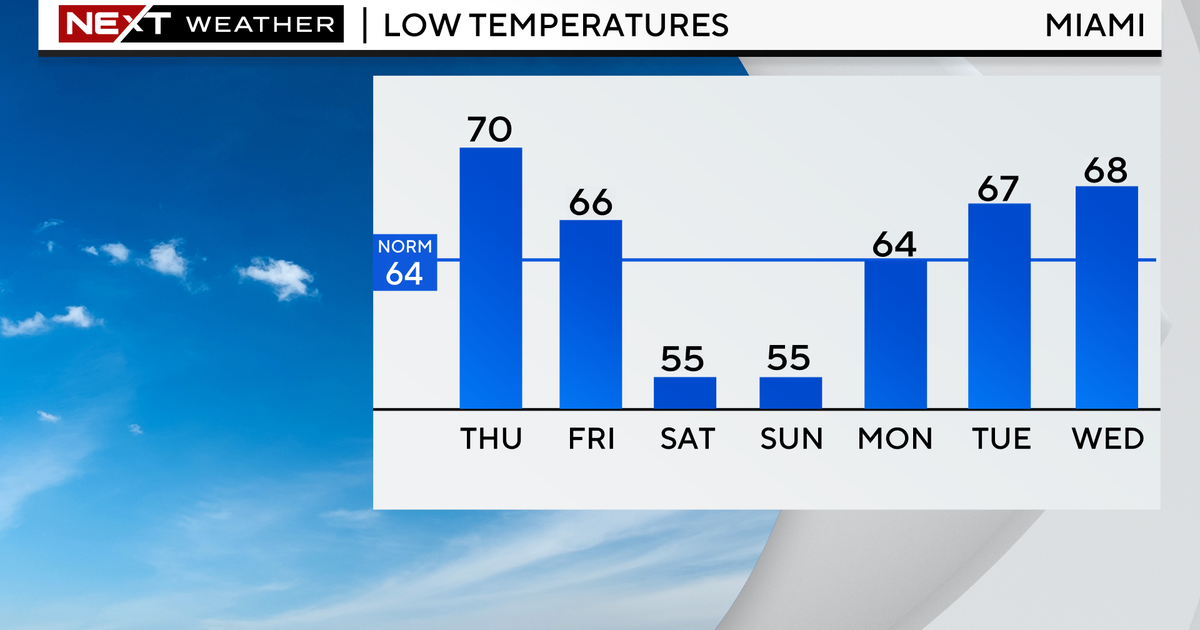Smokey The Bear Turns 70
LOS ANGELES (CBSMiami/AP) — Smokey Bear turned 70 on Saturday.
You may know him as the friendly, huggable bear with the brimmed hat and shovel who warns about fires.
As he enters his golden years, he's burning up Twitter with 24,000 followers and Facebook with $300,000 friends.
His message of fire prevention through personal responsibility hasn't changed much.
Here are some little-known facts about Smokey Bear on his big day.
Click here to watch the report.
STAYING POWER: Smokey Bear was created in 1944 because of fears that America's enemies would set forest fires while most U.S. firefighters were in battle overseas. When the war ended, Smokey stuck around — and he's now at the center of the longest-running public service announcement campaign in U.S. history. Research shows he is known by 96 percent of American adults and ranks near Mickey Mouse and Santa Claus for name recognition. His creation was a collaboration of the U.S. Forest Service, the National Association of State Foresters and the Ad Council.
A SOCIAL ANIMAL: Smokey's image has evolved over the decades to fit the latest media technology. When he first debuted, TV was in its infancy and posters were hand-drawn. Now, Smokey is a social media connoisseur and prolific blogger, with accounts on Facebook, Twitter (@Smokey_Bear), Instagram, YouTube and Flickr. He has more than 300,000 friends on Facebook and 24,000 people follow him on Twitter. Fans can sign a virtual card and upload photos at www.smokeybear.com. People still like to write to Smokey the old-fashioned way, too. The imaginary bear got his own ZIP code (20252) in 1952 as his popularity soared and it was reactivated this summer.
A QUIET BEAR: Smokey traditionally never spoke in his public service messages except for his signature line (Only You Can Prevent Forest Fires). Now, social media has given him a new outlet — and he's chatty. "It turns out he does have a voice and it's very clever," said Peggy Conlon, president and CEO of the Ad Council. Still,Smokey's message is sometimes best relayed through silence. A series of YouTube videos created around his 70th birthday show Smokey giving silent bear hugs (#SmokeyBearHug) to campers who properly build and extinguish camp fires and safely dispose of used barbeque charcoal, among other things.
WHAT'S IN A NAME: Most people know the finger-pointing fire-safety fanatic as Smokey The Bear, but in fact there is no "the" in the original name. In 1952, Steve Nelson and Jack Rollins wrote a song in his honor and added a "the" between "Smokey" and "Bear" to keep the rhythm flowing.
A BEAR IN THE CITY: In 2001, Smokey's public relations team changed his classic line to the more updated phrase, Only You Can Prevent Wildfires and revamped the campaign to address the growing threat of devastating wildfires in suburban and urban areas. Smokey hit the cities with a three-year "refreshed" campaign targeting casual adult hikers, bikers and campers and those living in urban areas adjacent to forest land.
THE 'REAL' SMOKEY: Smokey Bear's nascent ad campaign got a boost in 1950 when a real bear cub that had been rescued from a New Mexico wildfire was nursed back to health and sent to the National Zoo in Washington, D.C., as the living Smokey.
THE VOICE: Actor Sam Elliott, known for playing the bowling alley-narrator in "The Big Lebowski" and supporting roles in movies like "Up in the Air" and "Mask," has served as the latest voice for Smokey. Both share the same "birthday." Elliott, the son of a Fish and Wildlife official, also turns 70 on Saturday.
TM and © Copyright 2014 CBS Radio Inc. and its relevant subsidiaries. CBS RADIO and EYE Logo TM and Copyright 2014 CBS Broadcasting Inc. Used under license. All Rights Reserved. This material may not be published, broadcast, rewritten, or redistributed. The Associated Press contributed to this report.
RELATED CONTENT:



